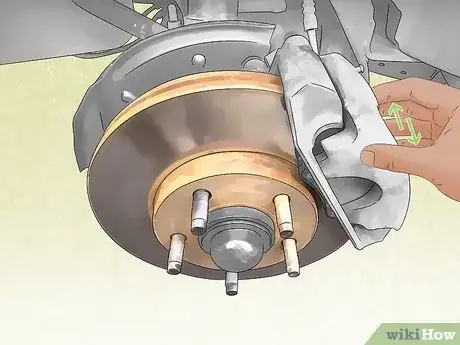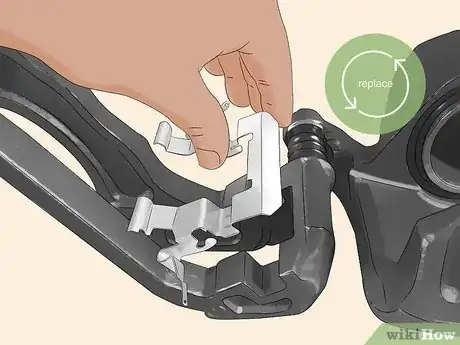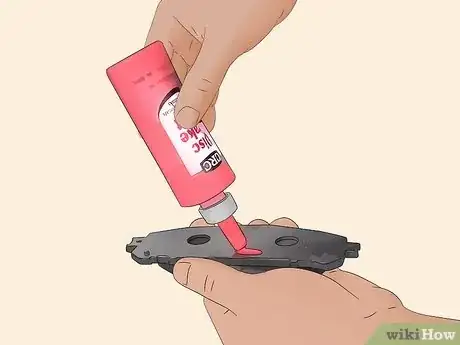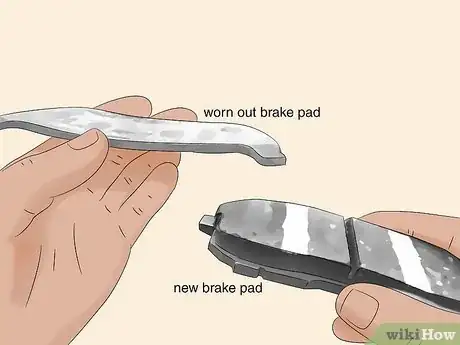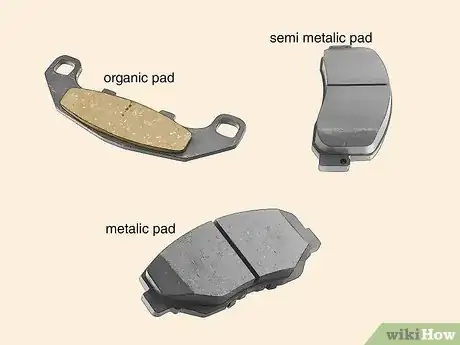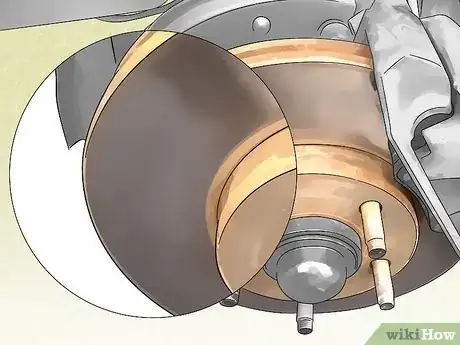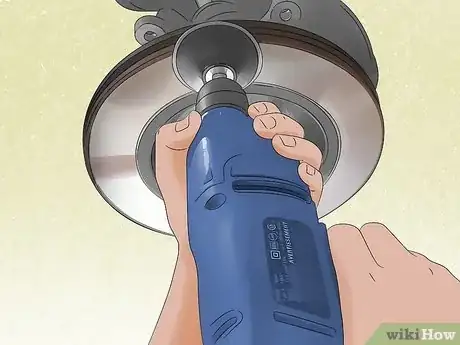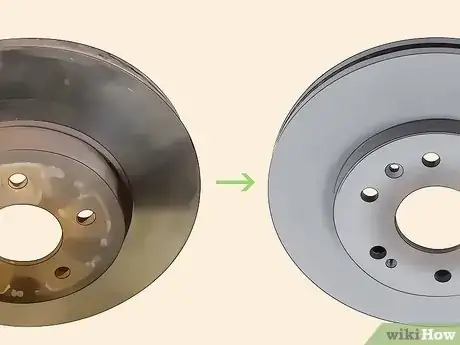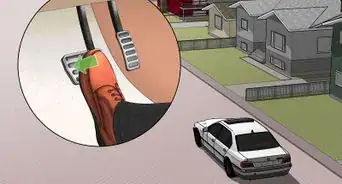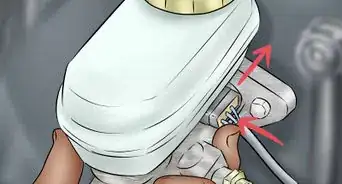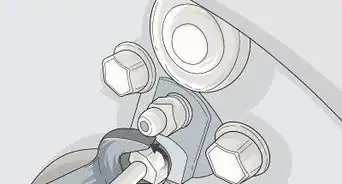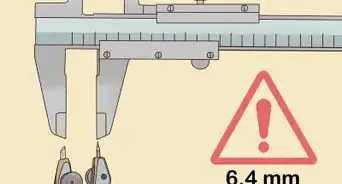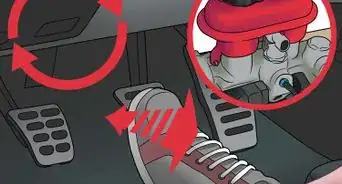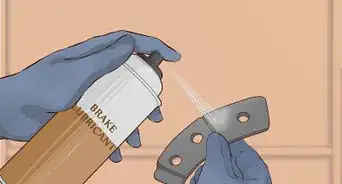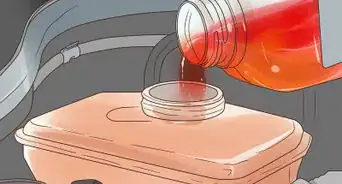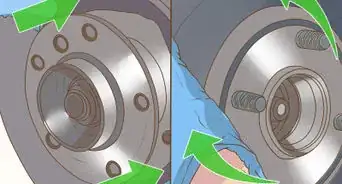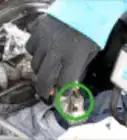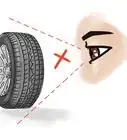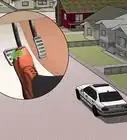This article was co-authored by Matthew Rava. Matthew Rava is an Auto Repair Expert and the Co-founder & Head of Marketing of Brakes to You. He specializes in auto repairs that concern brakes. Matthew earned a BS from West Chester University of Pennsylvania.
wikiHow marks an article as reader-approved once it receives enough positive feedback. In this case, several readers have written to tell us that this article was helpful to them, earning it our reader-approved status.
This article has been viewed 510,458 times.
Few problems are more annoying than noisy brakes. Even if the brake pads are not worn and the noise isn't being caused by damage, that nails-on-the-chalkboard squeal at every stoplight can fry a person's nerves. If your brakes are squealing, checking for loose parts, replacing parts that are missing, and incorporating padding and lubricating materials are all ways you can stop the noise.
Steps
-
1Check for loose parts. Try wiggling the brake pad, calipers, and other brake components. They should not move with just your hands.[1] Loose parts can vibrate, resulting in noise.
- If calipers are old, the pressure of the brake fluid can make them stick out to the point that they squeal.
-
2Replace any shims or clips that are loose, damaged or missing to ensure that the pad does not move in the caliper assembly.Advertisement
-
3Try a dampening paste. Disc Brake Quiet is one brand. Apply a thin layer of the substance to the back of the brake pads (between the pad and the caliper assembly). This will create a thin cushion to dampen the vibration and thereby the sound. Give the paste plenty of time to dry before you assemble the brakes to make sure it hardens: two to three hours at least, overnight if you can. It will become sticky and change to a darker color when it is dry.
- Heat from the sun or a hair dryer helps to dry the paste, but let it cool to room temperature before installing the pads.
- Should you need to clean or remove the dampening paste, use a degreaser or brake cleaner.
-
4Check the brake pads, and replace them if they are worn. Many disc brakes include a wear indicator designed to make noise if the pad is worn past a certain point.
- With aftermarket pads, sometimes the sizes can vary and cause the top of the pad to sit just slightly higher than the rotor. This will result in the brake pad wearing unevenly, leaving a lip or kind of a shelf of brake pad that rides over the tip of the rotor. This causes the brake pad to ride the edge of the rotor, causing a rotational brake noise. If your brake pads still have plenty of life left in them, you can sand the lip of the pad down (make sure you wear a mask to protect your lungs) to get more life out of the existing pads and eliminate the noise.
- A new brake pad is around 12 millimeters (½ inch) thick. When it gets too thin over time, it is not safe to use it anymore. Make sure that its thickness doesn't go below 3 millimeters (1⁄8 inch).
-
5Try different brake pad materials. Try different materials, but remember that noise and effectiveness may be a trade-off. It is best to replace brake pads with a similar material. Check the service manual for your vehicle to see what the manufacturer recommends.
- An organic pad (with or without asbestos) may be quieter, but may lack the performance and wear resistance of a semi-metallic or metallic pad. An organic pad may not tolerate heat as well, and may therefore be subject to more brake fade (reduction in braking effectiveness due to heat) than other pad materials.
- A semi-metallic pad, which has metal particles and organic material, tends to have the best of both worlds in braking ability without too much noise. It increases the pad life and decreases brake fade over organics, but it may wear the rotors slightly more. It will also tolerate repeated, hard stopping better without wearing as much as the organic pad.
- A "metallic pad" is just that. Different metals are used to provide the most friction against the rotor. It does a great job at stopping at repeated high speeds with minimum wear, but it will tend to make the most noise out of all the pads. Metallic pads will also cause the rotor to wear faster (grooves, ridges etc.), especially with stock rotors not designed for use with metal pads.
- Look for lubricating materials built into brake pads. Brass, graphite, carbon, and other materials in the formula can help reduce noise.[2] Because these materials are built into the brake pad itself, they will continue to lubricate rather than wearing off upon use.
-
6Check the brake rotor or drum for scoring, grooving, or other wear. An irregular brake rotor or drum surface can cause the brake pad to jump and chatter in the brake assembly and caliper.
- Check the surface smoothness visually against a comparator gauge or try writing on it with a ball point pen. If you don't get a smooth line, the rotor is either too greasy or too rough.[3]
-
7Resurface the rotors. If the rotor wear is not too deep, you may be able to have the rotors ground on a lathe to smooth the surface. Call around to find an auto shop that services brakes and has a rotor lathe. If you do find a shop, ask if they use round lathe bits to refinish as they produce smoother finishes. Additionally you should put a cross-hatch pattern on the newly cut surface using a rotor hone tool, it's similar to what your do with cylinders bores in an engine block.
-
8Replace the rotors or drums. If the wear is excessive or if the entire rotor is warped or distorted, you may have to replace the rotors altogether. Brake systems may be carefully designed and "tuned" by the manufacturer to avoid noise, so it is best to choose as close a replacement as possible.[4]
- You may also need new rotors if the sound is not a squeal, but a metallic grind. If the brake pads are too worn, the rotors may be damaged.
Warnings
- Bad brakes are a safety issue. Noisy brakes are a warning sign that the brakes may be bad, but noise alone is not always a hazard. Have noisy brakes checked if you are not sure.⧼thumbs_response⧽
- Always have the car inspected if brake noise is accompanied by other braking problems, such as pulling to the side upon braking.[5]⧼thumbs_response⧽
